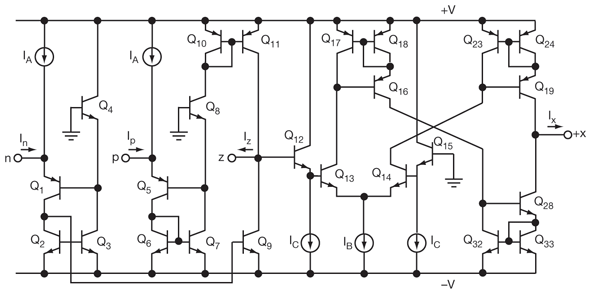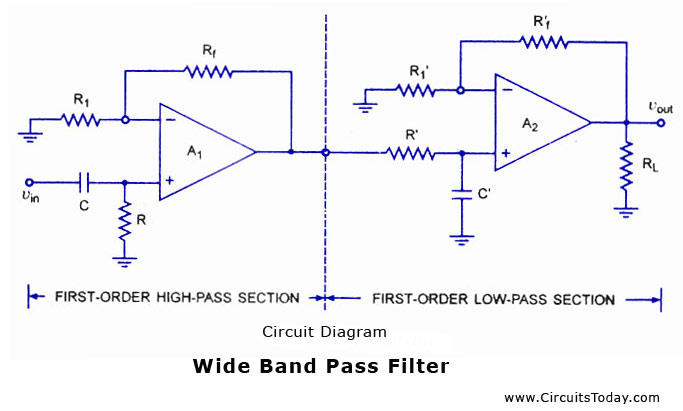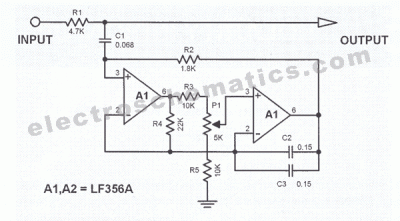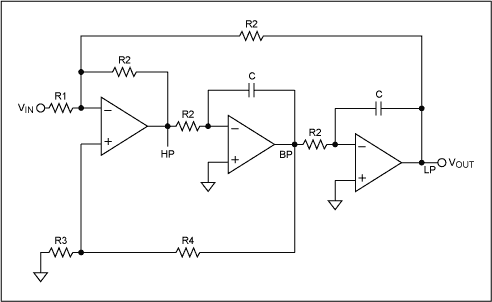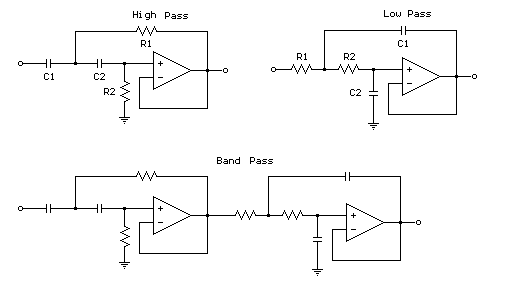
Filters
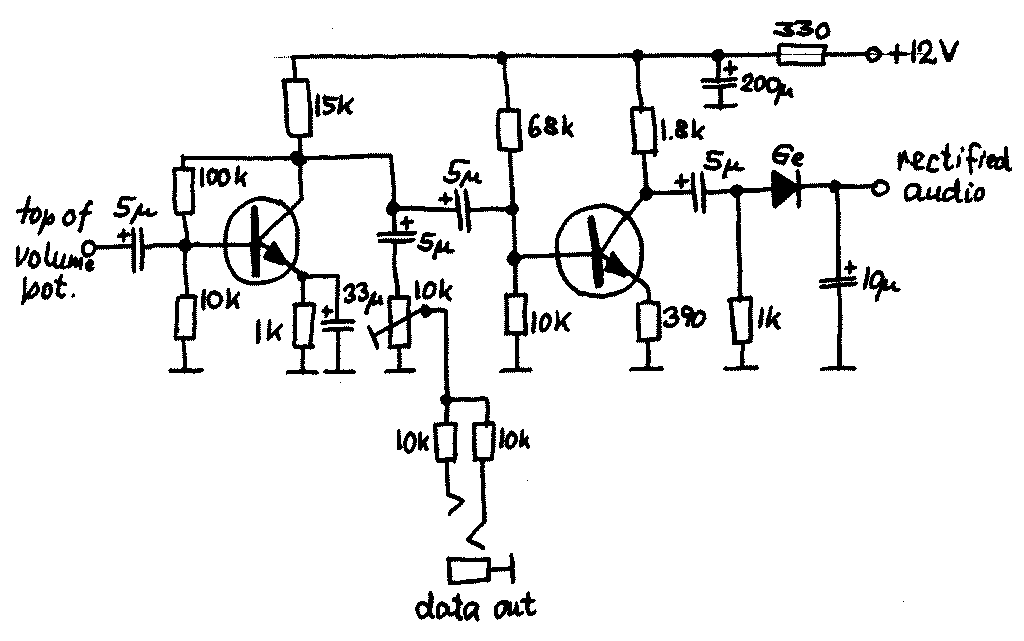
This option has the advantage that one does not need to change anything in the receiver itself. However, since any filter will give some attenuation of the signal, this will degrade the noise figure of the receiver and thus limit the weakest signal that could be detected. This is not a significant disadvantage, as it might seem, since at 20 MHz noise from the Milky Way provides a background of about 50,000 K, while the internal noise of the receiver is about 1,200 K. If the filter's attenuation is, for example, 10 dB, the galactic background is at 5,000 K, still much above the receiver's noise. Thus, it remains the limiting factor for the detection of signals. Another disadvantage may be the large space occupied by the filter: In order to provide a large rejection of unwanted signals, the resonators must have very low electrical losses, which can only be achieved with sufficiently large air coils. The best way to create low-loss resonating circuits is to use helical resonators, where the coils resonate with the capacitance of their shielding boxes. The filter described has two coils made from ordinary copper telephone or hook-up wire, approximately 0.5 mm in diameter, with red plastic insulation, wound on 2.5 cm diameter plastic tubes. The hot end of each coil is terminated with a small trimmer capacitor. Due to the jumpy nature of the trimmers available, two trimmers in parallel are used, each with a maximum capacitance of 12 pF. The two resonators are capacitively coupled through a silvered wire that leads from the top of the left-hand coil through a hole in the partition and ends as a nearly vertical wire placed close to the top of the right-hand coil. The input and output are connected via a tap at 1/2 to 3/4 of a turn from the earthy end. The wires bridging the front gap between the side walls serve to electrically close the box and shield the resonators from external influences. These wires are sufficient to close the box electrically while allowing mechanical access for adjustments, such as coupling. In electronically noisy environments, such as near computers, complete screening is essential; thus, the filter was covered with a piece of sheet metal soldered over the compartment, making it watertight. The schematic structure of a helical filter is shown, with inductive coupling via an aperture in the central partition at the earthy ends of the coils. Instructions for designing filters can be found in the book "Filter Design and Synthesis" by A. Zverev. Construction details of the filters include using copper-clad printed circuit boards for the boxes, ideally sized with a square section of 4 to 6 cm and a height of about 10 cm for reasonable results. The coil diameter should be half of the box width. Silvered copper wire of 1 mm thickness is commonly used, although normal copper wire is also suitable. The number of turns should be maximized; ideally, the coil wire length should be one-quarter wavelength, but at 20 MHz, this amount of wire would not fit in the enclosure. The exact number of turns is not critical, as the resonator can be tuned to the proper frequency using the trimmer capacitor, with the possibility of adding a fixed capacitor if necessary. After constructing the two coils, the crucial part is tuning the resonators and adjusting the input, outputs, and coupling between the resonators. Displaying the filter curve while sweeping through the frequency is almost indispensable. Tuning can be accomplished using a dip meter, but swept frequency measurement is the only method to adjust the coupling for the desired critical coupling, achieving a single maximum, a flat passband, and steep skirts. The input and output are connected to a low tap on the coils, approximately one turn from the earthy end, which essentially sets the bandwidth of the filter. For RadioJove applications, a bandwidth of around 300 kHz is desired to accommodate the receiver's entire tuning range. Proper measurements of the bandwidth can be conducted to verify if the desired value is achieved. For the filters discussed, an insertion loss of about 3 dB is expected, although even 10 dB will not significantly affect the sensitivity of the receiver due to the galactic background noise.
The helical filter described is a critical component in radio frequency applications, particularly for low-noise receivers. The design focuses on minimizing losses and maximizing signal integrity through careful selection of materials and construction techniques. The use of helical resonators allows for efficient energy storage and transfer, which is essential for maintaining signal quality. The choice of copper wire with appropriate insulation ensures durability and reliability, while the adjustable trimmer capacitors provide fine-tuning capabilities to achieve optimal performance.
In terms of construction, the use of copper-clad printed circuit boards not only provides a sturdy housing for the resonators but also aids in effective grounding and shielding against electromagnetic interference. The dimensions of the enclosure are designed to facilitate the necessary resonator dimensions while ensuring that the entire assembly remains compact. The tuning process, which involves careful adjustments to the resonators and monitoring of the output characteristics, is vital for achieving the desired filter response.
Overall, the helical filter's design and implementation reflect a balance between performance, practicality, and adaptability, making it suitable for various applications in the field of radio communications and signal processing. Proper attention to detail during construction and tuning will yield a filter that meets the stringent requirements of modern RF systems.This option has the advantage that one does not need to change anything in the receiver itself. However, since any filter will give some attenuation of the signal, this will degrade the noise figure of the receiver, and thus limit the weakest signal which could be detected. This is not a big disadvantage as it might seem, since at 20 MHz noise fro m the Milky Way gives a background of about 50 000 K, while the internal noise of the receiver is about 1200 K. If the filter`s attenuation is e. g. 10 dB, the galactic background is at 5000 K, still much above the receiver`s noise. Thus it remains the limiting factor for detection of signals. Another disadvantage may be the large space occupied by the filter: In order to provide a large rejection to unwanted signals, the resonators must be of very low electrical losses, which unfortunately can only be provided by sufficiently large air coils.
The best way to make low loss resonating circuits is to use helical resonators, i. e. the coils are in resonance with the capacitance of their shielding boxes. The filter shown above has two coils which are done from ordinary copper telephone or hook-up wire, about 0. 5 mm diametre, with red plastic insulation, wound on 2. 5 cm diametre plastic tubes. The hot end of each coil is terminated in a small trimmer capacitor. Since the trimmers I have are a bit jumpy when adjusting, I use two trimmers in parallel, each has 12 pF maximum capacitance.
The two resonators are capacitively coupled via the silvered wire which leads from the top of the left hand coil through a hole in the partition and ends as a nearly vertical wire placed close to the top of the right hand coil. The input and output is done by a tap at 1/2 to 3/4 of a turn from the earthy end. The wires seen to bridge the front gap between the side walls are installed to electrically close the box as well as to shield the resonators from external influences.
These wires are initially quite sufficient to close the box electrically while still allowing mechanical access to make adjustments e. g. of the coupling. Sometimes, an improvised close grid of wires can provide adequate shielding, as in the version we used in summer 2003 shown below.
However, if you are in an electronically noisy environment, for instance next to computers, a complete screening is absolutely mandatory - after finishing the design, the filter was covered with a piece of sheet metal soldered over the compartment, and it is now literally watertight! The above sketch shows the schematic structure of a helical filter with inductive coupling via an aperture in the central partition at the earthy ends of the coils.
Instructions how to design filters may be found in the book "Filter design and Synthesis" by A. Zverev. Here are some constructional details of filters I`ve built: The boxes are done from copper-clad printed circuit board; the size should be as large as convenient, but boxes with a square section of 4 to 6 cm, and about 10 cm height give reasonable results. The coil`s diameter should be one half of the width of the box. Most often I use silvered copper wire of 1 mm thickness, but as shown in the filter above, normal copper wire also is useable.
One makes as many turns as possible - ideally, the length of the coil`s wire should be one quarter wavelength, but at 20 MHz that much of wire would not fit in the enclosure. The exact number of turns is not so important, since one will make the resonator resonate on the proper frequency with the trimmer capacitor.
Sometimes, one needs to add a fixed capacitor as well. Having built the two coils, next comes the most essential and critical part: The tuning of the resonators and the adjustment of the input and outputs and the coupling between the resonators. The possibility of displaying the filter curve while sweeping through the frequency is almost indispensible!
One may tune the two coils to resonance by using a dip-meter. But swept frequency mesurement is the only way to adjust the coupling between the coils to the desired critical coupling, with a single maximum, a flat pass band and steep skirts. The input and output are connected to a very low tap on the coils, say to about one turn from the earthy end.
This essentially sets the bandwidth of the filter. If desired, proper measurents of the bandwidth can be made to verify whether the desired value is obtained. For RadioJove applications, one wants to have some 300 kHz bandwidth, so that the receiver`s entire tuning range fits in.
If possible, one should measure the insertion loss, i. e. the attentuation in the centre of the passband. For the filters described here, about 3 dB should be expected. But note that even 10 dB will not severely affect the senstitivity of the receiver, due to the galactic background. 🔗 External reference
The helical filter described is a critical component in radio frequency applications, particularly for low-noise receivers. The design focuses on minimizing losses and maximizing signal integrity through careful selection of materials and construction techniques. The use of helical resonators allows for efficient energy storage and transfer, which is essential for maintaining signal quality. The choice of copper wire with appropriate insulation ensures durability and reliability, while the adjustable trimmer capacitors provide fine-tuning capabilities to achieve optimal performance.
In terms of construction, the use of copper-clad printed circuit boards not only provides a sturdy housing for the resonators but also aids in effective grounding and shielding against electromagnetic interference. The dimensions of the enclosure are designed to facilitate the necessary resonator dimensions while ensuring that the entire assembly remains compact. The tuning process, which involves careful adjustments to the resonators and monitoring of the output characteristics, is vital for achieving the desired filter response.
Overall, the helical filter's design and implementation reflect a balance between performance, practicality, and adaptability, making it suitable for various applications in the field of radio communications and signal processing. Proper attention to detail during construction and tuning will yield a filter that meets the stringent requirements of modern RF systems.This option has the advantage that one does not need to change anything in the receiver itself. However, since any filter will give some attenuation of the signal, this will degrade the noise figure of the receiver, and thus limit the weakest signal which could be detected. This is not a big disadvantage as it might seem, since at 20 MHz noise fro m the Milky Way gives a background of about 50 000 K, while the internal noise of the receiver is about 1200 K. If the filter`s attenuation is e. g. 10 dB, the galactic background is at 5000 K, still much above the receiver`s noise. Thus it remains the limiting factor for detection of signals. Another disadvantage may be the large space occupied by the filter: In order to provide a large rejection to unwanted signals, the resonators must be of very low electrical losses, which unfortunately can only be provided by sufficiently large air coils.
The best way to make low loss resonating circuits is to use helical resonators, i. e. the coils are in resonance with the capacitance of their shielding boxes. The filter shown above has two coils which are done from ordinary copper telephone or hook-up wire, about 0. 5 mm diametre, with red plastic insulation, wound on 2. 5 cm diametre plastic tubes. The hot end of each coil is terminated in a small trimmer capacitor. Since the trimmers I have are a bit jumpy when adjusting, I use two trimmers in parallel, each has 12 pF maximum capacitance.
The two resonators are capacitively coupled via the silvered wire which leads from the top of the left hand coil through a hole in the partition and ends as a nearly vertical wire placed close to the top of the right hand coil. The input and output is done by a tap at 1/2 to 3/4 of a turn from the earthy end. The wires seen to bridge the front gap between the side walls are installed to electrically close the box as well as to shield the resonators from external influences.
These wires are initially quite sufficient to close the box electrically while still allowing mechanical access to make adjustments e. g. of the coupling. Sometimes, an improvised close grid of wires can provide adequate shielding, as in the version we used in summer 2003 shown below.
However, if you are in an electronically noisy environment, for instance next to computers, a complete screening is absolutely mandatory - after finishing the design, the filter was covered with a piece of sheet metal soldered over the compartment, and it is now literally watertight! The above sketch shows the schematic structure of a helical filter with inductive coupling via an aperture in the central partition at the earthy ends of the coils.
Instructions how to design filters may be found in the book "Filter design and Synthesis" by A. Zverev. Here are some constructional details of filters I`ve built: The boxes are done from copper-clad printed circuit board; the size should be as large as convenient, but boxes with a square section of 4 to 6 cm, and about 10 cm height give reasonable results. The coil`s diameter should be one half of the width of the box. Most often I use silvered copper wire of 1 mm thickness, but as shown in the filter above, normal copper wire also is useable.
One makes as many turns as possible - ideally, the length of the coil`s wire should be one quarter wavelength, but at 20 MHz that much of wire would not fit in the enclosure. The exact number of turns is not so important, since one will make the resonator resonate on the proper frequency with the trimmer capacitor.
Sometimes, one needs to add a fixed capacitor as well. Having built the two coils, next comes the most essential and critical part: The tuning of the resonators and the adjustment of the input and outputs and the coupling between the resonators. The possibility of displaying the filter curve while sweeping through the frequency is almost indispensible!
One may tune the two coils to resonance by using a dip-meter. But swept frequency mesurement is the only way to adjust the coupling between the coils to the desired critical coupling, with a single maximum, a flat pass band and steep skirts. The input and output are connected to a very low tap on the coils, say to about one turn from the earthy end.
This essentially sets the bandwidth of the filter. If desired, proper measurents of the bandwidth can be made to verify whether the desired value is obtained. For RadioJove applications, one wants to have some 300 kHz bandwidth, so that the receiver`s entire tuning range fits in.
If possible, one should measure the insertion loss, i. e. the attentuation in the centre of the passband. For the filters described here, about 3 dB should be expected. But note that even 10 dB will not severely affect the senstitivity of the receiver, due to the galactic background. 🔗 External reference
